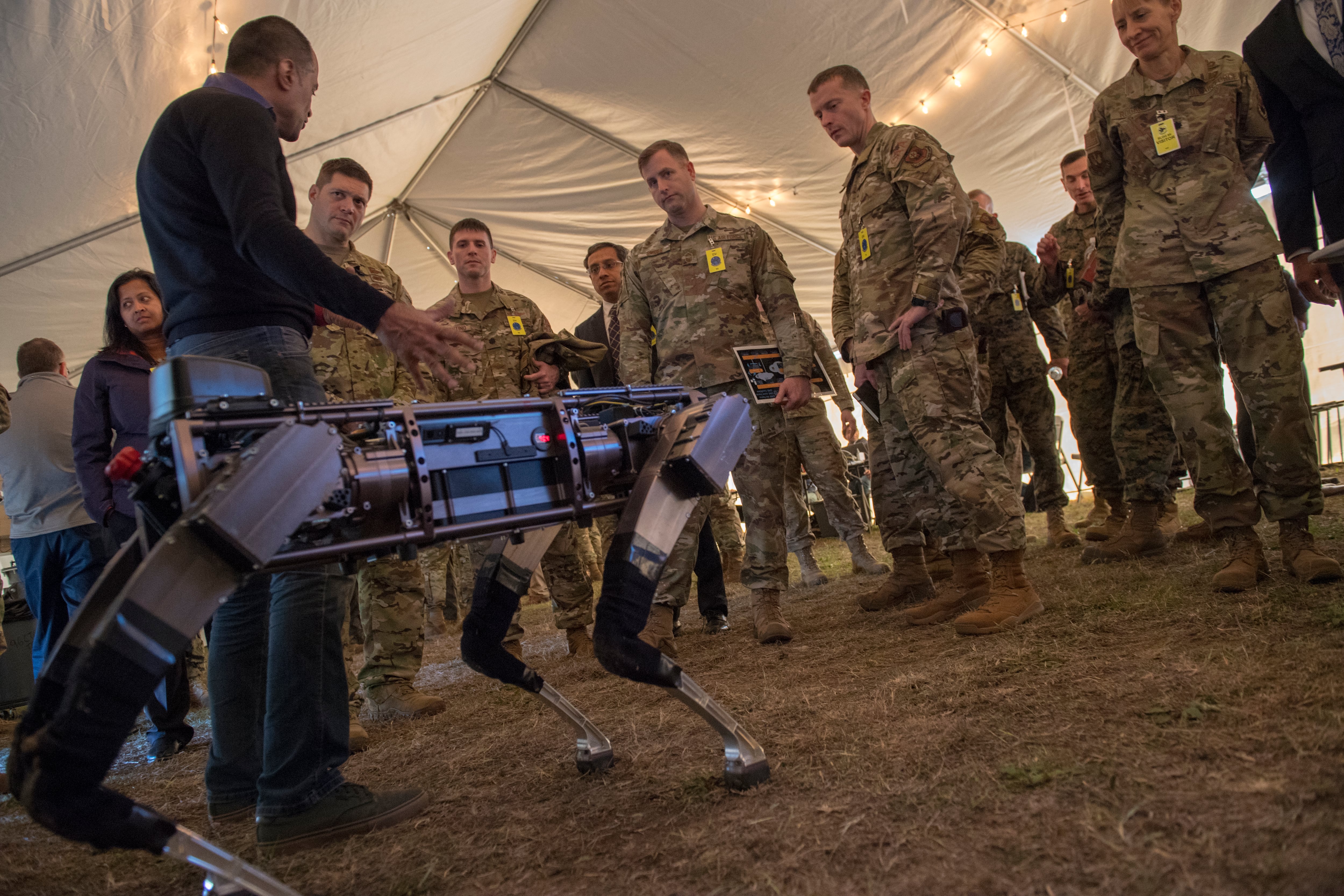WASHINGTON — Over the past few weeks, U.S. defense contractors have watched the new coronavirus, known as COVID-19, transform from a looming threat into a national crisis. But so far there have been no significant negative impacts to Air Force weapons development programs, the service’s acquisition executive said.
“There are always concerns, but right now I have no major delays, and that’s due to fantastic people thinking creatively,” Will Roper, the Air Force’s assistant secretary for acquisition, technology and logistics, told reporters in a March 27 teleconference.
It’s been a long week, but here are the CliffsNotes on what’s happening with Air Force acquisition:
Source selection for next-generation rockets and intercontinental ballistic missiles remain on track:
Contract negotiations are still continuing for the Ground Based Strategic Deterrent program, which will field a replacement for the Minuteman III ICBMs.
“GBSD is still on track to get their source selection done and contract awarded on time,” Roper said. “In fact, I was with that team just today, this morning, to double check and get an output from them.”
The Air Force is negotiating a sole-source contract with Northrop Grumman after Boeing dropped out of the program last year. A contract award is expected by the end of September 2020.
The service is also on pace to award a contract for its two next-generation rocket systems as part of the National Security Space Launch Phase 2 Launch Service Procurement, Roper said.
The goal of the program is to ween the U.S. military from operating launch systems with Russian engines such as the RD-180 currently used in Atlas V rockets made by United Launch Alliance.
United Launch Alliance, SpaceX, Northrop Grumman and Blue Origin are competing for the chance to be one of the Air Force’s two space launch providers. The service is expected to award a contract this year for missions from 2022 to 2026.
The pause in KC-46 aircraft production isn’t a major issue ... yet:
Boeing announced earlier this week that it would implement a two-week pause at its production facilities in the Puget Sound, Washington-region — including the Everett production line of the KC-46.
The Air Force was given early notice of the decision by Boeing Defense CEO Leanne Caret, Roper said, and the program can easily recover from a two-week delay.
However, if the suspension is extended to a month or longer, it will have a larger impact on KC-46 deliveries, he acknowledged, adding that there’s currently “no reason” to believe Boeing will extend the pause in production.
“We’ve tried to make it very clear to our industry partners that we expect them to do whatever is necessary to keep our critical defense-industrial base workforce and their families healthy, but the standing back up will be important too, because that sends a message to our adversaries that a domestic crisis is not a time of opportunity nor does it create a readiness bathtub in the future,” he said.
The Air Force and Boeing also continue to make progress on negotiations for a final design of the Remote Vision System, a series of cameras and sensors used by KC-46 boom operators to see outside of the tanker and guide the boom into a receiver aircraft for midair refueling. However, Roper was hesitant to say that an agreement would be reached by March — the service’s prior projection.
“It’s always tempting for me to put a date. When you’re working on a negotiation, it’s tough. There are a lot of details to go through, but that has not come off the table, and we’re hoping that we will reach an equitable agreement soon,” he said.
The biggest concern is whether governors will issue statewide lockdown decrees that don’t make exceptions for defense contractors:
If states begin to completely shut down business operations with “shelter in place” orders that make no exceptions allowing “mission critical” personnel like defense contractors to go into the office, companies like Raytheon and Northrop Grumman will be unable to progress with classified work.
“Right now we don’t have the ability to remote SCIFs,” Roper said, using an abbreviation for Sensitive Compartmented Information Facility, which are spaces secured for the sharing of classified information.
RELATED

The Pentagon’s top acquisition authority, Ellen Lord, has been calling governors individually to stress the importance of keeping defense contractors at work, Roper said.
“As long as our industry partner can give us a heads up before these state and local laws are in place, the response Ms. Lord has seen has been a real willingness to do what’s right for local populations but still doesn’t put national security at risk,” he said.
The Air Force hopes to field a new network to allow users to communicate at the “secret” level over the next few weeks:
The service is accelerating work on a distributed classified communications system called “deviceONE” that will be part of the Advanced Battle Management System. The system allows users to send data up to the “secret” level to handheld devices like smartphones and tablets.
Roper hopes to field deviceONE “within weeks, maybe one week,” though he acknowledged that the program is working through “security considerations” before the deployment.
RELATED

“We are now looking to buy these devices in scale, in the thousands,” he said. “We are thinking ahead for managing programs this way long term so that we don’t have those impacts. As long as people have communication lines at the right level of classification, they’re finding ways to get the job done.”
Roper couldn’t recall which companies are involved in making deviceONE, and did not say whether the technology would be available to defense contractors or if it will be solely for Air Force use.
In other news, the Space Fence is finally operational:
During an earlier teleconference with reporters, Chief of Space Operations Gen. John Raymond confirmed that the Space Force will declare initial operational capability for the Space Fence on March 27 after more than a year’s worth of delays.
The Space Fence is an advanced radar made by Lockheed Martin that will allow the military to track debris in space, particularly objects in low-Earth orbit.
Only one such radar exists, at Kwajalein Atoll in the Marshall Islands, meaning that objects move in and out of its sight and cannot be continuously tracked. In its test phase, the new Space Fence identified space debris that had never been seen by legacy systems.
The program was initially scheduled to hit IOC in 2018.
Valerie Insinna is Defense News' air warfare reporter. She previously worked the Navy/congressional beats for Defense Daily, which followed almost three years as a staff writer for National Defense Magazine. Prior to that, she worked as an editorial assistant for the Tokyo Shimbun’s Washington bureau.








